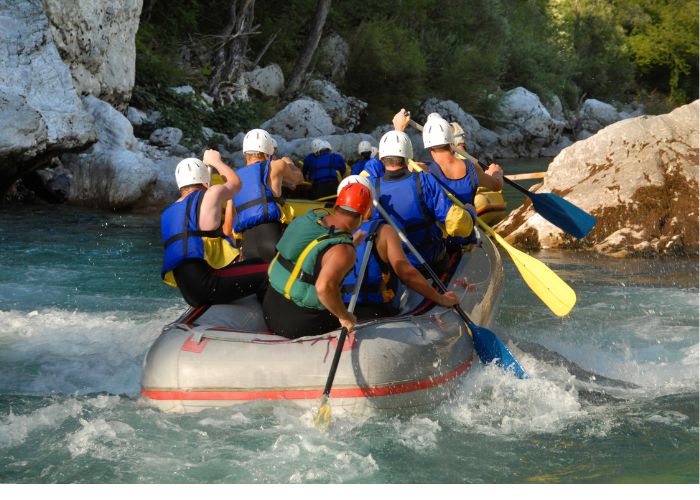MADRID – The drought in Spain is not only felt by farmers on the land. Water restrictions also apply in built-up areas throughout the country. In addition, it puts pressure on tourism companies that rely on full rivers and reservoirs for water sports and activities.
In northwestern Spain, industry representatives have asked the Hydrographic Confederation of the Ebro River to ensure minimum water levels. They need this to be able to work during the peak months of the holiday season. “The situation is dramatic,” says Inés Dewulf, the president of the Aragonese Association of Sport Tourism Companies.
We wrote here earlier about the drought in Catalonia. This has also led to the water level in three reservoirs being so low that they can no longer be used by firefighting aircraft to fetch water in case of forest fires in the area.
‘This season is already lost’
The sector is important, with 50 companies, 1,500 direct employees, 180,000 activities in the past year and a turnover of €15 million. On the Canelles reservoir, guides have long since abandoned water sports activities. In others, such as Mediano, they also know that work cannot be done. “Some companies already consider this season lost,” says Dewulf in Heraldo.es.
As for whitewater activities, kayaking and rafting will be subject to agreements with the hydroelectric companies and the Hydrographic Confederation. Water reserves in some rivers are already at levels “typical for mid-July”. Canyoning will also be affected, she adds.
Satisfying
Dewulf indicates that she is very grateful that the Hydrographic Confederation wants to take tourism activities into account in power management in these times of crisis. However, she has no doubt that there will be “restrictions and adjustments” that could prevent the development of adventure activities, especially around whitewater rivers. Below the upper reaches of the Ebro, are the rivers Gallego, Esera, Noguera-Pallaresa and Noguera-Ribagorzana. Calmer waters can be found in the reservoirs of Mediano, El Grado or Linsoles.
According to Dewulff, the situation cannot be compared with the consequences for the primary sector. “But we also employ many people, generate wealth and stimulate rural areas and local tourism”.
The president of the Hydrographic Confederation, Dolores Pascual, also pointed to the recreational sector as one of the sectors that will suffer from the drought. Pascual emphasized employment in the villages, which will also come under pressure in this situation.
Looking for consensus
Several discussions have been held on the subject of hydroelectric power plants that can still influence the situation in the rivers and reservoirs to some extent. Dewulff’s work has been crucial – she says – “building bridges between unions for irrigation, hydropower, industrial use…” and seeking a consensus that guarantees tourism activity as much as possible, “they it with severe restrictions due to the severity of the drought”.
Also read: The consequences of drought in Spain


